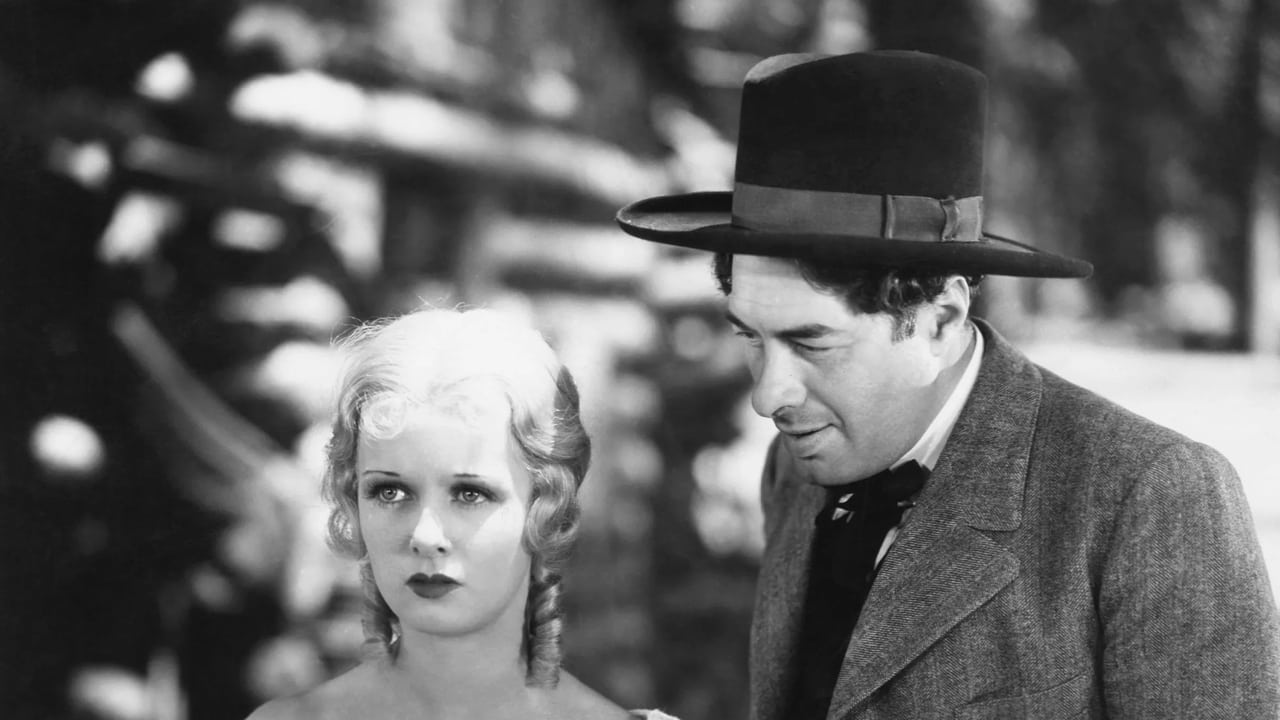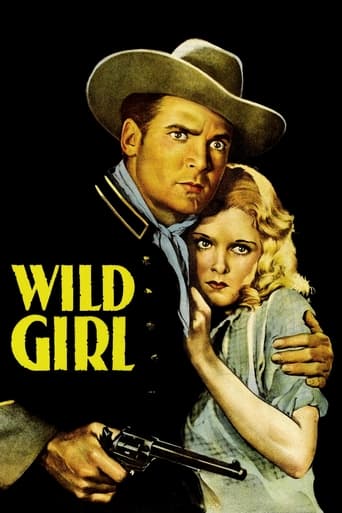rohsenow
An exceptionally rare pre-Code western-romance-comedy starring Joan Bennett, Charles Farrell, Ralph Bellamy, and Eugene Palette, and directed by the always-brash Raoul Walsh. Adapted from the Brete Harte short story 'Salomy Jane's Kiss' and filmed on location among majestic California redwoods, this film features a young blonde Joan Bennett as the titular "wild girl"—a nature-loving free-spirit who is wooed by many but who falls for an out-of-town stranger (Farrell). Made in 1932 before the Hayes Office Code was strictly in force, Wild Girl shuttles between romance, adventure, raucous comedy, and titillation (a skinny-dipping Bennett). The unusual opening credit sequence is one of the most memorable of the period. This film is full of rowdy fun -- highly recommended!
wmorrow59
When this rare Western was shown recently at the Museum of Modern Art I happened to overhear a conversation, just before the screening, between two women sitting in the row ahead of me. One had already seen Wild Girl, and assured her friend that it's very enjoyable, then added that the opening credits alone are worth the price of admission. That struck me as puzzling, but once the movie started I understood what she meant. The first thing we see is an old-fashioned photo album on a desk, with a lit candle nearby. As if by magic the book opens itself, and the film's credits appear on its pages, which turn one by one, in a forerunner to the "storybook" style credits the Disney studio would favor for their cartoon features in later years. It's pleasant enough, but the truly memorable part comes with the introduction of the featured players. We see them one at a time, first Charles Farrell, then Joan Bennett, Ralph Bellamy, etc., each standing as if posing for a formal portrait, in costume. And each in turn delivers a brief speech, telling us something about the character he or she is playing. This photo album motif continues throughout the film, recurring at key points in the story, when the page-turn effect reappears as an optical wipe that provides a change of scene.The motif is charming and well suited to the material. Wild Girl is an adaptation of "Salomy Jane," a novella by Bret Harte published in the late 1800s. (There was also a 1907 stage version called "Salomy Jane's Kiss.") Director Raoul Walsh's highly cinematic presentation reminds us that what we're experiencing is, above all, a movie and not a book or a play, and also helps us make allowances when the plot turns melodramatic, or when the acting occasionally comes off as stage-y. What isn't at all stage-y is the scenery: Wild Girl was filmed on location in Northern California at Shasta National Forest, and it's plain from the opening sequence, as Salomy Jane (Joan Bennett, blonde and dazzling) and her Mammy Lou (Louise Beavers) run through the woods among bear cubs, that the giant redwood trees we're seeing are the real thing, not a studio set. The scenery is amazing and beautifully photographed, and it's also noticeable that the editing tempo is brisk, and the use of sound in this outdoor setting is sophisticated. There's no need to make excuses for this film as an "early talkie" in terms of its technique, for Walsh was past that phase, and well ahead of many of his contemporaries in utilizing the still new, still evolving technology.Naturally the title refers to Salomy Jane, a very attractive tomboy who lives in a mountain town, where, naturally, several of the men folk compete for her affections. There's Jack Marbury the gentleman gambler (Ralph Bellamy), whom she likes, and loutish Rufe Waters (Irving Pichel), whom she dislikes. And then there's the pseudo-pious political climber Phineas Baldwin (Morgan Wallace), whom she loathes. But the man of the hour, who appears out of nowhere and swiftly steals Jane's heart, is a handsome stranger (Charles Farrell) who comes to town to settle an old score with Baldwin. Colorful characters abound in this locality. There's a family headed by no-account Red Pete, whose wife Lize loves him anyhow (Willard Robertson and Sarah Padden portray this pathetic couple, and both are excellent). But despite all these folks jostling for our attention, stagecoach driver Yuba Bill (played by the one and only Eugene Palette) deftly steals the show. He's a timorous, long-winded braggart, and the scene where he breathlessly attempts to describe a hold-up, only to digress into a series of horse whinnies and snorting noises, is an indisputable high-point. And I haven't even mentioned yet that Salomy Jane goes skinny-dipping in a lake. When she first encounters the handsome stranger, she's naked as a jay bird. That's how they "meet cute," and come to think of it, that's the sequence I personally consider worth the price of admission.Wild Girl offers a little of everything. One minute you're laughing at Yuba Bill's antics, the next you're gazing awestruck at the scenery, and then suddenly there's a chase and a shoot-out. In the midst of it all comes a lynching scene that is as powerful as anything this director ever staged. Yet somehow, with all the plots and subplots and shifts in tone, Walsh keeps it together, running smoothly. The film has its flaws: some of the actors get histrionic at times, and there are moments when the dialog creaks a bit, giving off echoes of that 1907 stage play. Over all, however, Wild Girl works the way it was meant to work. I do hope this beautifully restored, richly detailed and unjustly forgotten film, which seems to have gone unnoticed on its initial release, can now at last find its audience. It's one of the great popcorn movies of its era.
boblipton
Raoul Walsh tackles Bret Harte in this one. It's a natural for this usually muscular director with a vicious sense of humor; he was fond of repeating Jack Pickford's comment that his idea of light comedy was to burn down a whorehouse.Although he has fallen out of favor, Harte and Mark Twain were judged neck-and-neck for the two best writers to come out of the Old West. Harte's characters were not one-dimensional; he approached them as complex human beings with conflicting sets of emotions and self-justifications. As a result, this movie, derived from "Salomy Jane's Kiss" has a lot going for it. Add in the outdoor shooting among the redwoods around Mount Shasta and the lovely conceit of using frame wipes that freeze the frame and then make it look like a page being turned, and you have a beautiful motion picture.Unhappily, few of the performances are up to the visuals. Perhaps it was due to the fact that handling of sound outdoors was still pretty primitive and some of the performers are either unseasoned for the screen or still not out of the silent era and the line readings sound very stagey. Whatever the reasons, they act best when they are doing things, not saying things -- the hanging sequence is devastating.Even with that cavil, this is a wonderful picture. Everyone looks right and Joan Bennett is stunningly beautiful. If you get a chance to see it -- mine came with the 2012 Museum of Modern Art 'To Preserve and Project' festival -- take it.

